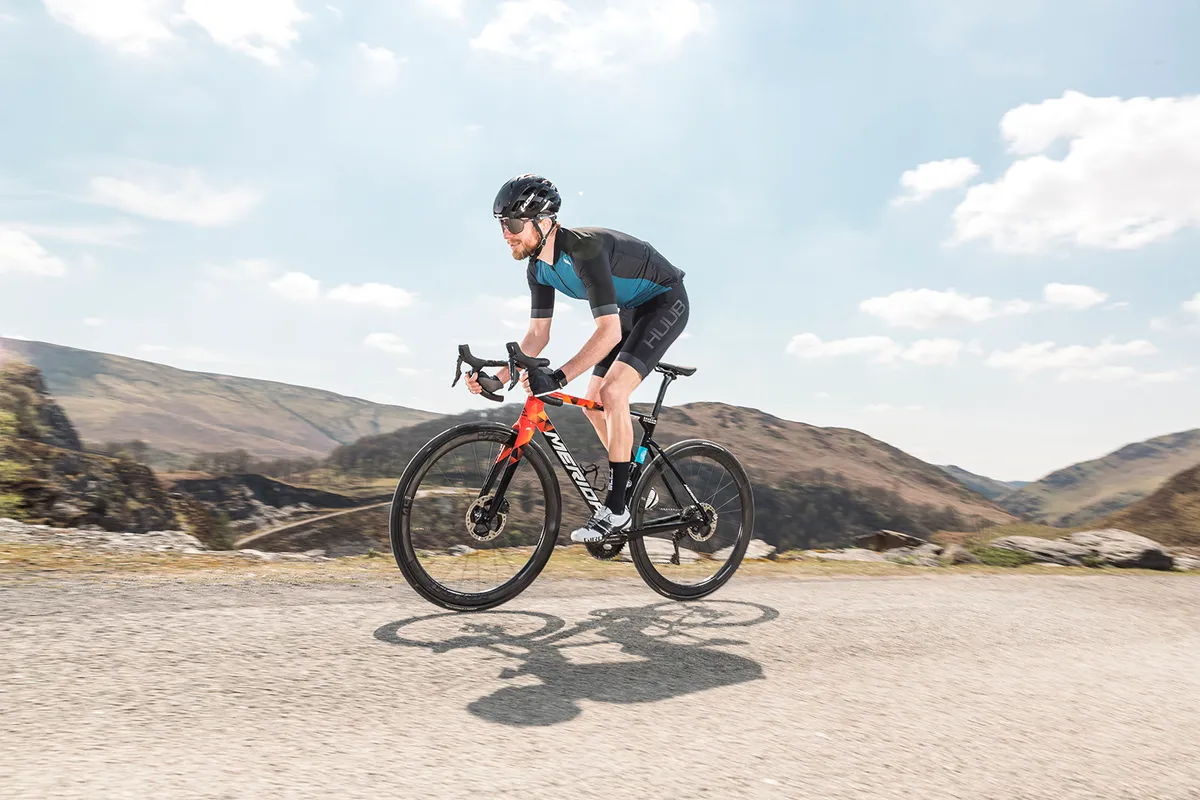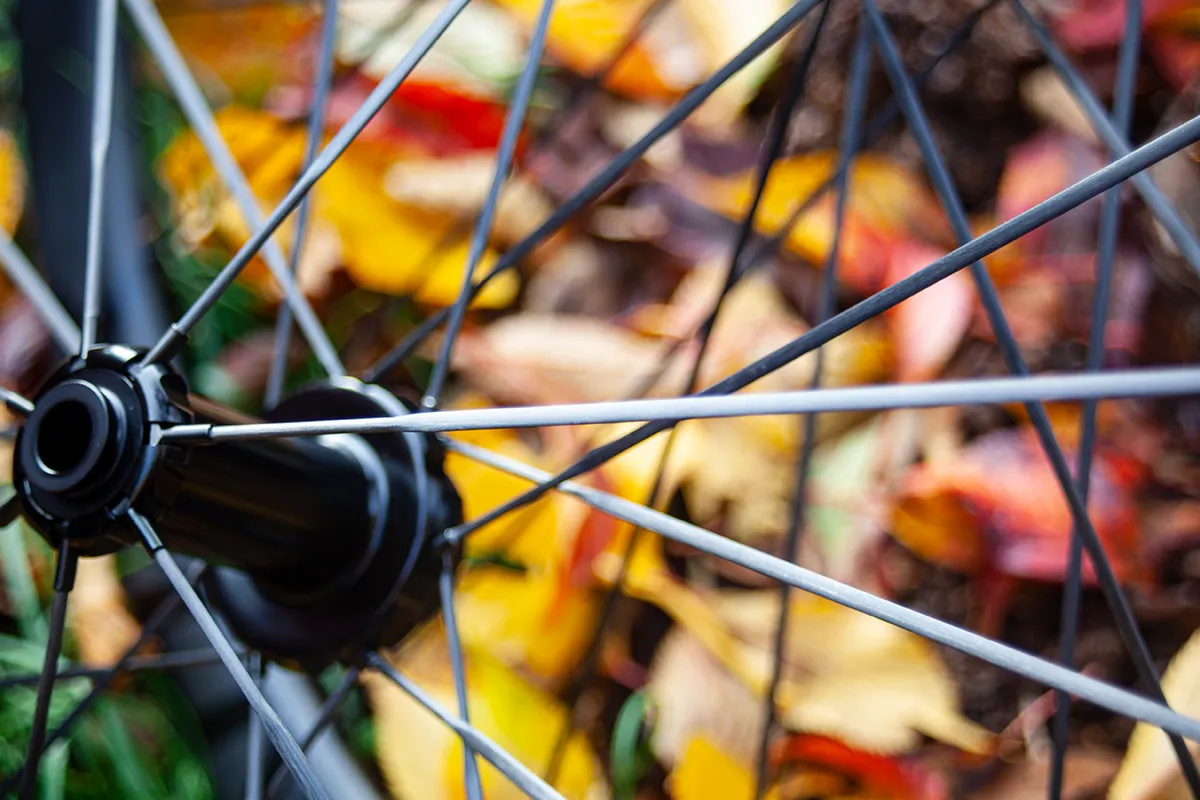It's time for the latest instalment in our Tech Q&A podcast series and, for this episode, BikeRadar’s deputy editor, Jack Luke, and technical editor-in-chief, Rob Weaver, are on hand to answer your questions.
With technical editor Alex Evans as your host, Jack discusses carbon frame protection for bikepacking and weighs up a decision between the Merida Scultura and Scultura Endurance road bikes.
Rob, meanwhile, shines a light on how to clean up stuck-on tubeless sealant and how best to carry ride essentials, whether in a cycling backpack or elsewhere on the bike. Finally, we discuss mountain bike handlebar dimensions and buckled wheels.
Listen to the full episode below – or read on for a summary of Jack, Rob and Alex's answers.
What's the best way to clean dried tubeless sealant from inside wheels, tyres and off a frame?

Rob: "For the inside of the tyre, just use hot soapy water and a scouring sponge. Rub away at those little bits and they should come off after a while.
"Put something on the floor or ground so you can clear it up afterwards.
"You can also use stiff washing-up brushes to get it out.
"If that fails, pour brake cleaner into the tyre, give it a light coating and then leave it a few minutes and wipe it out with a scouring sponge.
"I would then give it a hose down and clean.
"With the frame, I would always start with hot, soapy water. If that's not working with the more stubborn stuff, you can use isopropyl alcohol, which shouldn't have any effect on the frame material.
"Gently rub it on with an old cloth and that generally gets rid of it.
"Make sure you also take the valve out and give it a clean, so it's fully functioning. If that doesn't work, it doesn't matter what the sealant does when you've topped it back up."
Between the Merida Scultura and the Merida Scultura Endurance, which one would you pick?

Jack: "Have a careful think about the type of riding you'll be doing. The Merida Scultura is a very racy bike and was highly reviewed by Simon von Bromley.
"He noted that its handling is particularly nippy, it's a proper race bike.
"The Scultura Endurance is more endurance-focused with more relaxed geometry, so a little taller with large clearances.
"It is also a very nice bike, one that has reviewed well on our site.
"The Endurance is the more versatile of the two. If you're thinking of the odd gravel dalliance or longer-distance ride, that might be a better bike for you.
"But if you are more interested in performance and smashing yourself up climbs, I'd be going for the racier bike. But I'd base that on your riding.
"I'd pick the Scultura because I prefer a more sporty road bike, and if I wanted something more versatile I would buy a gravel bike."
What do mountain bike handlebar dimensions mean and should I care about them?

Rob: "I think yes, personally. There are certain things, like width, you will always want to tailor to your own preferences.
"Most modern mountain bike bars will be 800mm, but that is wide.
"Width dictates how far your hands will be set apart. It is a personal thing.
"Wider bars offer more leverage, which is generally a good thing in terms of control (narrower bars can feel twitchy).
"But it’s important to find the right width for you.
"Too wide and you’ll be pulled too far forward on the bike, which may compromise your ride position.
"Buy a set of wide bars and move your grips and controls inwards until you find the width you're happy with.
"Then you can cut off the overhanging bit of the bar.
"The press-up test is a quick and easy way to get an idea of bar width. Measure how far apart your hands are when you do a press-up on the floor. You'll get an idea of the width where you feel strong.
"Rise is really critical. It's how tall the bar is.
"Most mountain bike bars have some rise from 10 to 40mm. You don't see much more than that.
"Too high and you'll lack control over the front wheel; too low might mean you feel so far over the front wheel you are going to flip over the bars.
"Taller bars will leave you in a more upright position on the bike and shift your weight up and back.
"Then you have got sweep. Upsweep is how much the bar swings up from the centre clamp point to the end of the bar. This is generally about five degrees.
"What varies more is backsweep – how far the bar swings backwards from the centre point to the end of the bars.
"Most are between seven and nine degrees. The backsweep influences how much strain is put on your arms.
"Before buying a bar, I'd recommend jumping on a mate's bike to see what you feel comfortable with.
"How much you roll your bars – forward or backward – influences ride position and comfort. Forwards roll creates a more aggressive position, whereas I prefer to roll my bars backwards for comfort.
"Clamp diameter measures how fat the bar is in the centre where the stem clamps it. It's usually either 31.8mm or 35mm, so make sure the clamp diameter is compatible with your stem."
What's the best and most economical way to protect a carbon frame against rubbing or scratching from bikepacking bags?

Jack: "We'd advise using frame protection such as Invisiframe (which is essentially XPEL tape) where the bags would come into contact with the frame.
"Carbon isn't great as a material in terms of withstanding abrasion so, beyond any areas where bikepacking bags might rub against the frame, other areas to pay attention to would be the inside of your chainstays, seatstays and fork, where the tyre or any debris could come into contact with the frame.
"The downside to this is that you need to be careful when applying any protective tape to protect the paintwork of your frame.
"When it comes to removing it, which you also need to do methodically, it can have a tendency to peel off some of the lacquer.
"This shouldn't be a problem if you leave the frame protection on permanently."
Alex: "I use rubber 3M mastic tape to protect my chainstays and this can also be used underneath bikepacking bags."
Should I be riding without a backpack and, if so, where can I put my stuff?

Rob: "People ride without packs because it can feel freer and prevents you from getting a sweaty back. But it doesn’t mean it’s the right thing to do.
"If you don’t want to wear a pack, it’s important that you have space for a water bottle on your bike so you can stay hydrated.
"Many brands now offer dedicated frame straps that’ll allow you to strap a tube, C02 inflator or pump, tyre levers and tools to your bike.
"Some brands offer straps with dry bags that’ll even let you bundle everything up and keep it away from the mud, too.
"There are also frames with internal storage, and some saddles have integrated tool storage.
"You can also carry a bum bag for everything else.
"Nothing beats a good pack for longer rides, though, especially if you’re venturing somewhere more remote.
"They also offer a bit of extra back protection."
Is my wobbly back wheel likely to be bent, a spoke issue or something else?

Jack: "First, check if it is really your wheel that's wobbling. It could be your tyre, because it's not unusual for the tread to wobble back and forth.
"It could be the tyre not being seated squarely in the rim. That's easy to get caught out by with new tyres.
"But if it is the wheel, it's probably gone slightly out of true. The best thing to do is to true your wheel."
Alex: "To true your wheel, you'll need to check your spoke tension. So carefully flip over your bike or put it in a workstand.
"Slowly spin the wheel while feeling the spokes with your hands.
"If one is really loose, that's the obvious culprit. But if they are all pretty tight, it's a case of fine-tuning them."
Rob: "If the wheel is far gone, it's a lot of time and money down the drain. Getting a professional to look at it is no bad thing."
Subscribe to the BikeRadar Podcast
Make sure you subscribe to the BikeRadar Podcast via Apple Podcasts, Spotify or your chosen podcast provider, so you don't miss an episode.
The BikeRadar Podcast takes you to the heart of the issues that matter, whether you're a roadie, mountain biker, gravel rider or commuter.
From the latest tech news, reviews and debates, to interviews with the biggest personalities in cycling, the podcast is your direct line into the BikeRadar team.
